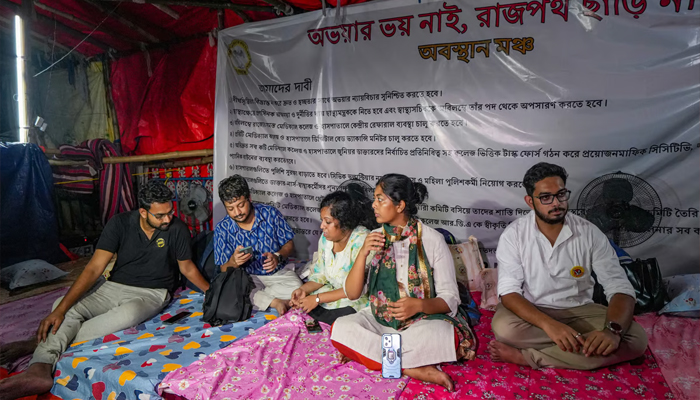
Kolkata: The fast-unto-death strike by a section of medicos in the aftermath of the rape and murder of a junior doctor of R.G. Kar Medical College & Hospital here entered the thirteenth day on Thursday.
Eight hunger-strikers, seven in Kolkata and one in Siliguri of Darjeeling district are determined to continue with the same, posing a challenge for the state government which they allege is yet to accept their key demands.
So far, six junior doctors who were participating in the hunger strike, which started on the evening of October 5, had to be hospitalized following severe deteriorations in their medical conditions.
They are Tanaya Panja and Anustup Mukhopadhyay of Calcutta Medical College & Hospital, Aniket Mahatao of R.G. Kar Medical College, Pulastya Acharya of N.R.S. Medical, Aloke Verma of North Bengal Medical College and Souvik Banerjee of North Bengal Dental College & Hospital. Of the seven hunger-strikers who are continuing with the protests at Esplanade, three, namely Arnab Mukhopadhay, Snigdha Hazra and Sayantani Ghosh Hazra were among the first six who started the fasting agitation on the evening of October 5. Throughout this hunger strike period, they have maintained total transparency in their protests keeping the footage of the CCTV machines installed there for public scrutiny and giving hourly updates of the medical conditions of the strikers on a display chart at the dais.
They are only surviving by drinking water. As per the latest information available, of the seven protesting junior doctors at Esplanade, five barring Rumelika Kumar and Spandan Chowdhury, who joined the strike on the evening of October 15, the medical conditions of the other five, have worsened significantly.
The gravest cause of concern is that ketone bodies have been detected in the urine of all five of them. In medical terms, ketones are produced when the body breaks down fat for energy instead of glucose and are present in urine when there are high levels of ketones. While small amounts of ketones are normal, high levels can indicate a condition called ketoacidosis, which can be life-threatening.
